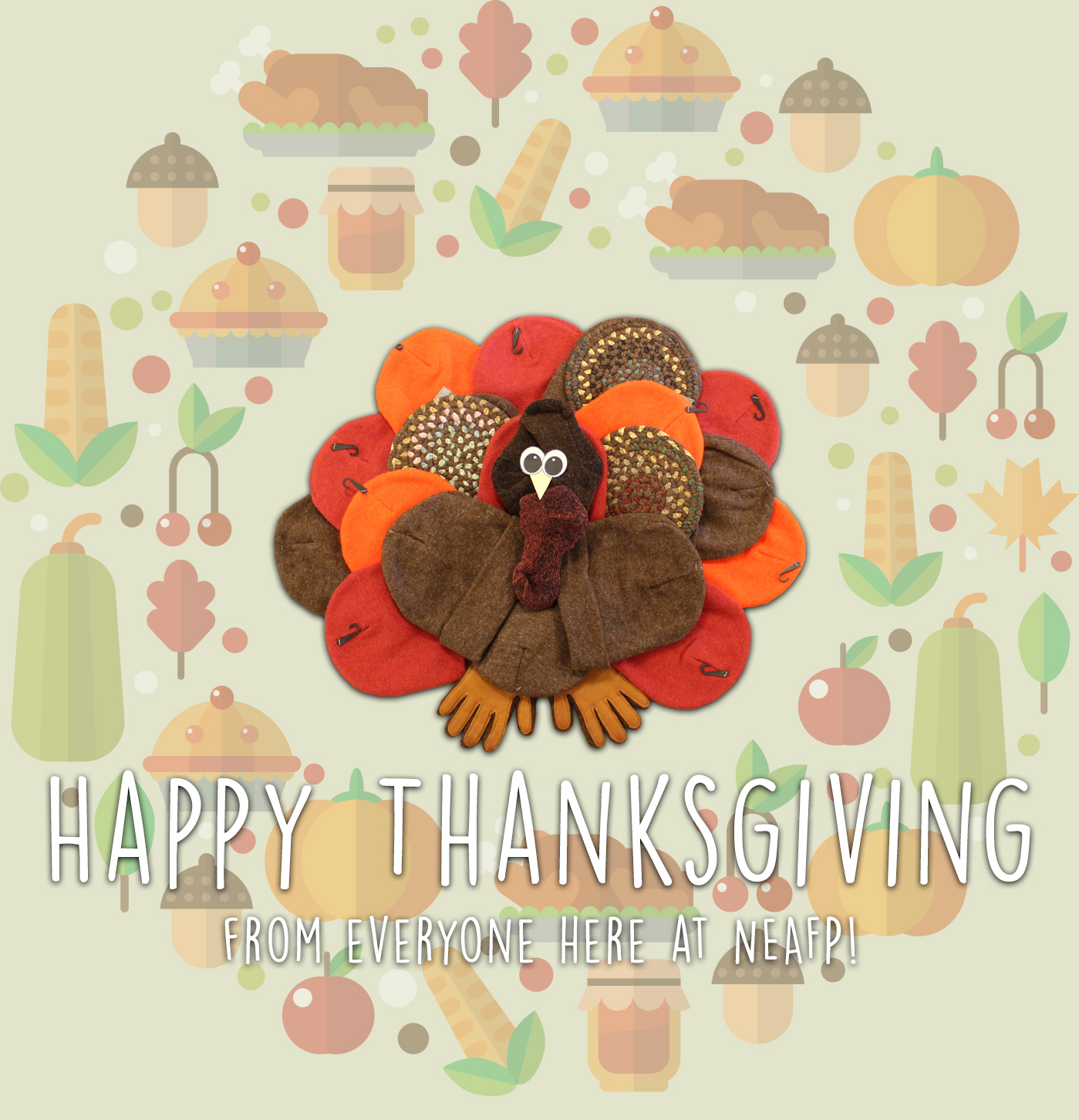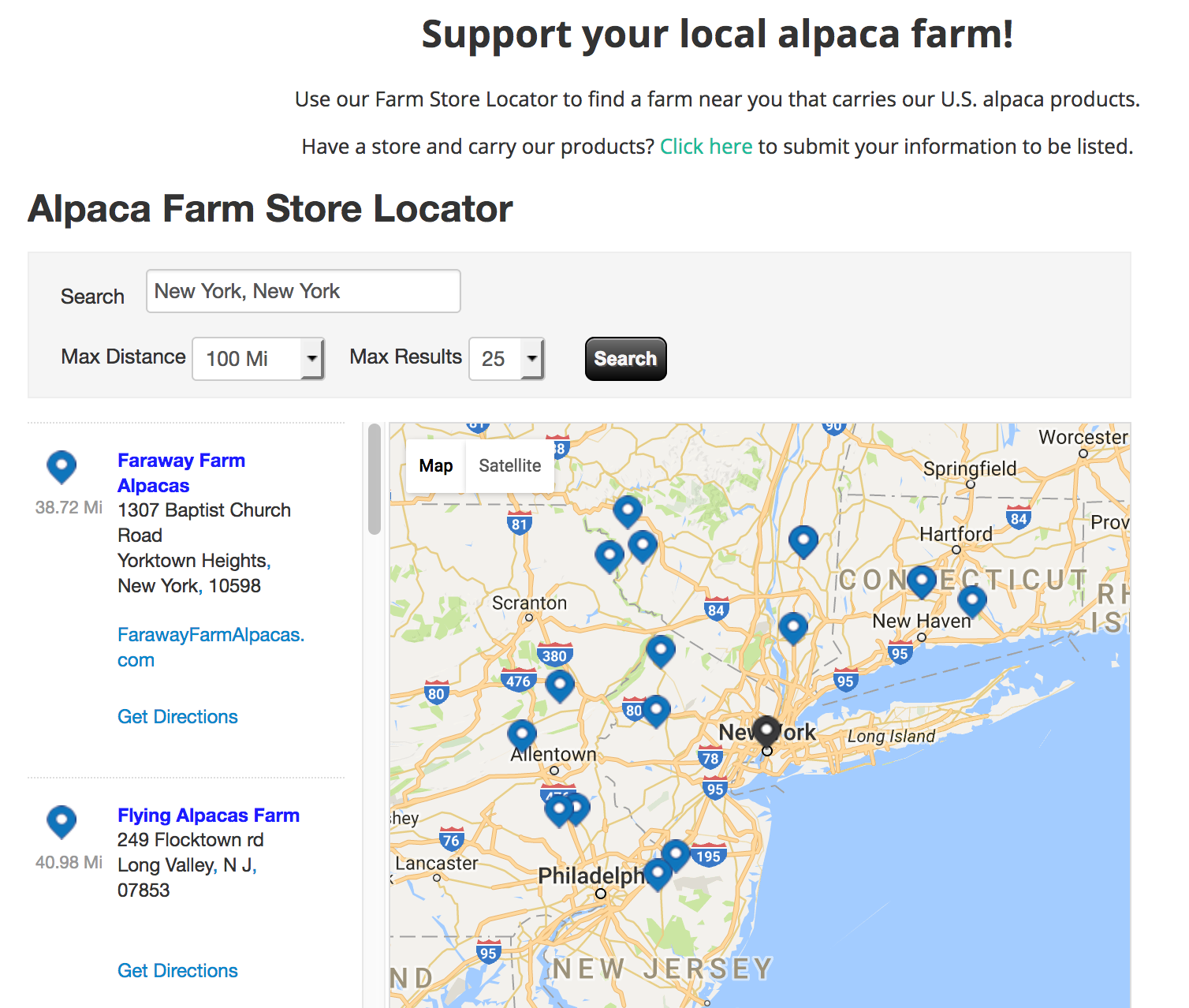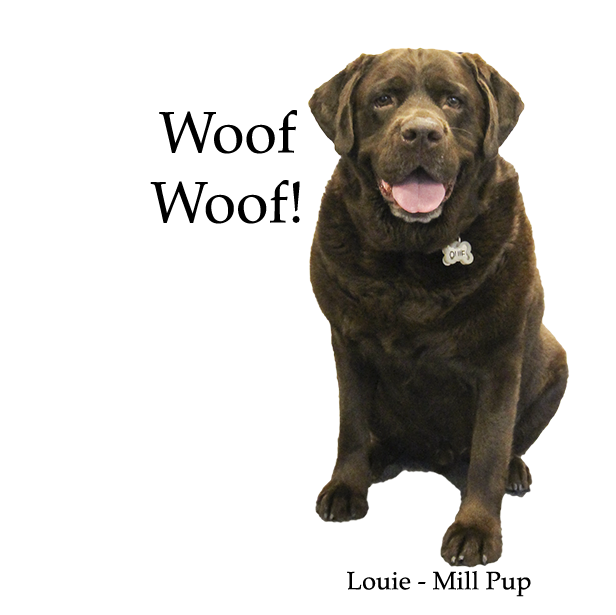Recent Blog Posts
-
06/26/2025NEW Downloadable Content: Find the Difference Activity Page
-
04/25/2025VIDEO: Take a Virtual Tour of our Mill!
-
01/17/2025Reviews: What People are Saying About The Survival Sock!
-
09/13/2024Download A Free Handwear Informational Print Out!
-
09/13/2024NEW Downloadable Content: Know Your Alpacas! Coloring Page
-
08/16/2024NEW Downloadable Content: National Alpaca Farm Days Word Search
-
06/21/2024VIDEO: What to Expect When You Submit Your Fiber to NEAFP
-
05/24/2024VIDEO: Getting Started Submitting Alpaca Fiber
Alpaca Coloring Pages
- Happy Memorial Day 2024: Alpaca's Grazing
- Winter #1: Build a Snowman Activity
- Winter #2: Extreme Sports
- Valentine's Day: Alpaca Wedding
- St. Patrick's Day: Leprechaun
- Spring: April Showers
- Summer: Beach Day
- 4th of July: Colonial Alpacas
- Summer: Farmer's Market
- Fall: Apple Picking
- Halloween #1: Costume Contest
- Halloween #2: Spooktacular Halloween
- Thanksgiving #1: Giving Thanks Activity
- Thanksgiving #2: Pilgrim Alpacas
- Christmas #1: Deck the Halls
- Christmas #2: Santa's Workshop
Alpaca Fact Series
Business Resources
- Article: Email is still a MUST DO for all Alpaca Farms
- Article: Off the Beaten Path Event Ideas on the Alpaca Farm
- Download: Sock Photo Download Folder
- Graphics: Shop Small this Holiday Season
- Article: Form Follows Function: Dressing for Fall and Winter 2020
- Graphics: Sock and Handwear Comparisons
- Article: A Change in the Seasons: Farms Continue to Adapt into the Busy Harvest Season
- Graphics: How to Support Alpaca Farms
- Graphics: Alpaca Fiber Properties
- Article: Customer Retention: Building Customer Loyalty for your Ecommerce Business
- Article: Harnessing Storytelling to Market Your Business
- Article: The New Normal and a Renewed Support for U.S. Alpaca
- Article: Use Gift Cards to Increase Sales
- Article: Virtual Farm Tours: Bringing People & Alpacas Together in the Virtual World
- Graphics: Get the Most out of your Fiber Harvest
- Graphics: Alpaca Knitter's Yarn Guide
- Article: Mike and Sean's Adventure in Retailing
- Article: Harnessing Holiday Sales Momentum into the New Year
- Graphics: U.S. Alpaca Holiday Gift Guide
- Graphics: Small Business Saturday Resources
- Article: Tools and Topics for Implementing Healthy Soil Agriculture
- Article: Successful Social Media Marketing for Alpaca Farms
- Article: Agritourism on the Alpaca Farm
- Article: Finding Success at Fall and Winter Markets
- Article: Brand Identity & Your Local Community
- Article: Social Media: Alpacas are STILL Seriously Trending
- Article: Let's Get Personal: Expanding your Inventory with Product Personalization
- Article: Part 2: Promoting your Brand Online through Product Styling
- Article: Promoting your Brand Online through Product Styling
- Article: 7 Old School Ways to Spread the Word about your Event
- Article: 5 Ways your Open House can increase Future Sales
- Article: Top Alpaca Related Hashtags to increase your Reach!
- Article: Alpacas are SERIOUSLY Trending
- Article: How to Utilize CO-MARKETING
- Article: Farmers Share their Booths and Tips
- Article: Mobile Payment Survey Results
- Article: Product Photography Do’s and Don'ts
- Article: Driving Business After the Holidays
- Article: Marketing Reflection and Planning
- Article: The Slow Alpaca meets Slow Fashion
- Article: Use Gift Cards to Increase Sales
- Article: The Importance of Being Mobile Friendly
News
NEAFP Note: 20 Years of U.S. Alpaca
Read the NEAFP Note here: http://eepurl.com/cAqah5
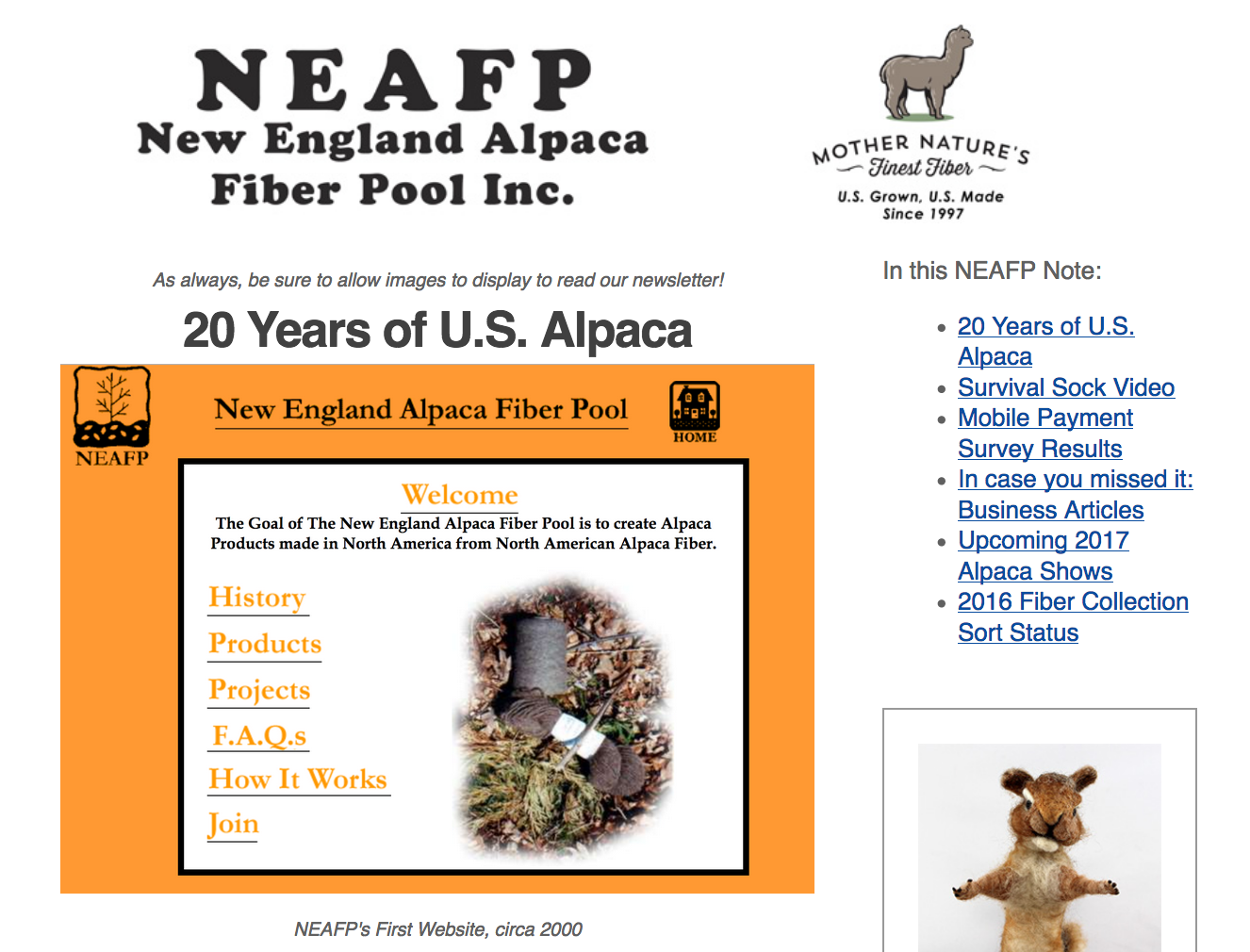
Read the NEAFP Note here: http://eepurl.com/cAqah5
Article: Mobile Payment Survey Results
Mobile Payment Survey Results
by Brianna Paon
First and foremost we’d like to thank everybody who read our Square Mobile Payment Article as well as participated in our Alpaca Store Mobile Payment survey! Your feedback is extremely important to us and we of course wouldn’t be able to be here without the help and support of our customers and their flourishing businesses.
We created this survey partly to help us to gauge how our products are being carried forward into the world of retail, and what is offered in terms of payment methods. As we’ve concluded in that article, one of the most if not the most important favor you can do for your small business is offer the use of credit/debit cards. If you are not offering this payment alternative, you are running the risk of losing business to competitors, even if you have the best product and best overall brand message.
We are living in a time where quickness and convenience coincide with one another―nobody wants to feel like they are wasting their time simply by trying to buy your products and give you money. Judging by the results of the survey, we can conclude that an average of 87% of our customers (you guys!) accept payments through credit and debit cards, and out of that 87% a solid 65% use Square as their POS (Point of Sale) system.
For those who may be a bit skeptical, or think it isn’t necessary or of interest to explore the opportunity of mobile payment usage, I candidly ask you to think again. A loyal customer of ours had said it best, “anyone who doesn’t take credit is leaving money on the table.”
Some other notable survey result quotes:
"Taking credit/debit cards has increased my sales exponentially. I am
also able to offer incentives and discounts to customers online AND as a
thank you to those who have already purchased. I couldn't do the
business I have without using Square. Love it!"
"We find the data collection of the Square system to be a real asset to
our business. Sales tax reporting is a breeze; setup is easy for a non
techie person; information on exactly what sold over any time frame is
invaluable; refund processing is easy. wouldn't be without it."
Article: Product Photography Do's and Don'ts
Product Photography Do's and Don'ts
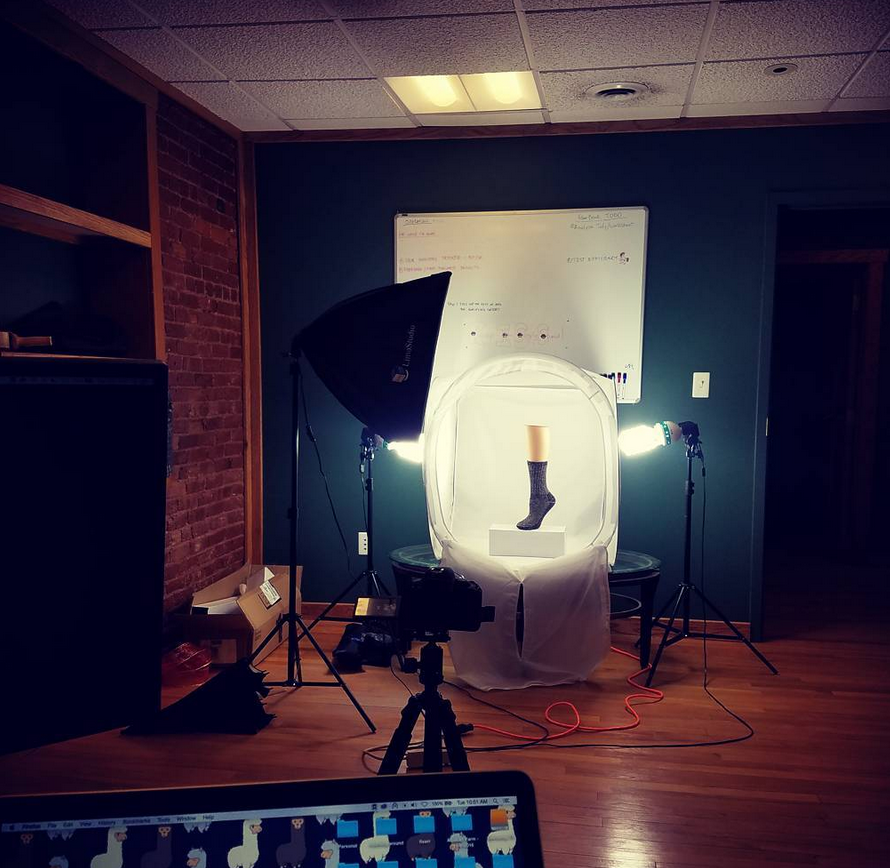
By Brianna Paon
When browsing online to buy a product - a new vest let’s say - you are more than likely going to stop at one that catches your eye. It could be the vest itself that you are attracted to of course, but what we may not think about is how the product is presented and why it caught your eye in the way that it did. It could’ve been how well lit the product looked in comparison to others. It could be the crisp, white background contrasting against the vest. It could also be the crystal clear quality of the photo in comparison to photos that might appear grainy or dull. Whether we are aware of it or not, product photography has a big role in our decision to buy something, and the same thing applies to how people view your products on your online store.
While many of us may not be very well-versed in the world of photography, (I certainly am not) there are methods to achieving beautiful photography of your products that is seemingly professional, and won’t cost you an arm and a leg. Many may assume that you need to own a multi-thousand-dollar camera in order to capture professional shots, but that is not the case - there are a multitude of digital cameras, including ones under $100 that would be perfectly suitable for capturing your products (see Amazon links below). If you’re looking to purchase a camera, or already have one, familiarize yourself with the camera settings and what each setting is meant to capture. Alternatively, many of you may already own a Smartphone that will take comparable product photos to entry level digital cameras. They also offer different camera settings, similarly to regular digital cameras, and are made to be user friendly. Toying around with these camera settings is not a bad idea either, as it will help you determine which setting to use in order to get the best quality of what you’re capturing ---- this will be dependent on the product itself, the color(s) shown, the background and most especially, the lighting.
Besides the camera you use to capture your photo, the lighting may be equally as important in getting a quality product shot. Familiarizing yourself with ISO, shutter speed and aperture are especially important, as they are all focused around controlling the amount of light that enters the camera. Even the perfect angle would have a tough match against the light reflecting on and off the product you’re capturing - even our bare skin can reflect light onto an object enough for it to look drowned out! The best part, however, is that there are a number of Do-It-Yourself projects that help you to achieve the best lighting, requiring very little cost.
A product photography box is one of the essential tools necessary to seclude your product and surround it with the best lighting possible so that you can capture that perfect money shot. Even if you are only using your smartphone to capture your photos, using a light box may fool people into thinking you used a professional camera! Creating one of these boxes could make a world of a difference for how your products are perceived, as well as your amount of sales, and you only need to spend about $10 for the materials to do so. (Yes! Really!)
As previously mentioned, the clearer and better lit the photo of your product is, the more attracted people will become. Now that people are increasingly utilizing online avenues for their businesses, it should be in your best interest to do the same! We now live in a time where people are constantly on their phones, tablets or other mobile devices, and this is where people often will do their shopping. If you’d like to know a fun fact, it is proven that 80 percent of people remember what they see and only 20 percent of people remember what they read. This goes to show how critical it is to market your products through the use of imagery. Multiple studies suggest that social media audiences react best to visual content, which explains why the userbase on sites like Pinterest have been booming - not only is imagery much more attractive than wordy content, but social media sites such as Facebook prioritize ads based on lack of text; your image is more likely to show up in people’s feeds than a paragraph explaining what your newly released products - and the better the photo, the more likely it will bring you a new customer. These days, there is more pressure than ever to attract your audience within just a few seconds - while you may have an incredible product, people may scroll right past it if it isn’t eye-catching material that truly POPS!
Fortunately, there are a number of articles and videos online, that further explain the importance of product photography, as well as offer pointers on creating DIY projects. Check out the video below to learn how to build the miraculously cheap product photography box - your bank account will thank you.
Further Resources
Video: How to Build a Photo Light Box for Less Than $10
Video: Easy Product Photography with your iPhone / Smartphone
Video: Aperture, Shutter Speed, ISO, & Light Explained - Understanding Exposure & Camera Settings
Video: Photography Tips for Beginners
Links to other Resources / Articles:
Digital Cameras under $100: Kodak PixPro (Amazon), Sony Digital Camera (Amazon), Canon PowerShot (Amazon)
11 DIY Product Photography Hacks
Tips and Tricks for Product Photography on a Budget
Video: Showcasing the Survival Sock
We are excited to share a new video showcasing the features of our best selling Survival Sock! Feel free to share and embed this video on your website, blog, or social media pages as a way to help educate your current and potential customers of the great features this sock has to offer!
Article: Driving Business after the Holidays
Driving Business After the Holidays

By Brianna Paon
Figuring out ways to increase business during a slow season doesn’t have to be a daunting task. With the busy Holiday sales season officially behind us and the increase in downtime that comes with it, now is a great time to test out new marketing tactics to keep your sales momentum moving. In the world of retail, immediately after the busiest season of the year typically follows the slowest, where everyone is exhausted from all of the celebrating and gift giving. Despite this, there are still numerous ways that you can help drive sales during this slower time, as well as use the concept of the New Year to your advantage. Whether it be a free shipping promotion, releasing new products, or a new social media campaign, the New Year opens up many possibilities that can prove fruitful.
The new year is a wonderful excuse to refresh yourself and reevaluate your life goals. It’s the only time of year one can designate New Year’s resolutions for themselves, whether they aim to improve health and wellness or take on new projects. This is a perfect time to have your business jump on the resolution bandwagon and market to the New Year attitude. It doesn’t need to be anything extravagant - a simple “new year, new socks” could be enough to resonate with people in your customer base. Giving your business some personality that is quirky yet relatable can go a long way.
What’s nice about this time of year is that people have just finished dropping loads of cash on gifts for other people - this means that it’s a perfect time to push the idea of getting a gift for yourself. The concept of “treating yourself” and planting the idea that people are deserving of your products can certainly make people more inclined to buy. People like when the focus is on them - it’s human nature! Rather than trying to market the advantages of your products and why they’re awesome, focus on the customer and why they’re awesome. Depending on how you would like people to perceive your business and its message, you could definitely have some fun with this. “The Survival Sock: for awesome people only” is a silly and playful example of how to target market to your audience. It presents exclusivity, which people like, and focuses on the buyer rather than just the sock/product itself.
While marketing to the new year attitude as well as motivating people to gift themselves are both effective, these are only two of the many approaches you can take to drive sales. There are plenty more ways to boost business this winter without the stress. Below is a list of suggestions on tactics that are worth giving a try - please feel free to provide us with any feedback on what has worked for you and your business!- Don’t “go quiet” after the holidays
- Focus on self-gifting
- Follow up with your holiday shoppers
- Start a sale (i.e. winter clearance, free gift, bulk discounts)
- Product bundling
- Join in resolutions - market to the New Year attitude (promote products that enhance health/offer physical benefits)
- Market using email to existing customer base
- Retargeting / Remarketing
- Leverage Automation
- Use a multi-media approach
- Spread out your advertising budget to include after the holiday sales season!
- Improve your online reviews - Give your customers incentive to positively review your business and products
- Stock up on content - stay relevant and share with your customer base
- Offer coupons/loyalty rewards
- Target abandoned shopping carts
- Track numbers and results
Article: Market Reflection and Planning
It's time to reflect back on your 2016 Marketing Strategy

By: Brianna Paon
Now that we are two weeks into January we can officially say that the holiday sales rush has come to a close. After countless events, pop up markets, open houses, and a steady flow of farm store visits our natural instinct is to kick our feet up and put last year officially in the rear view. This time of year, however, is actually the best time to reflect back on the tools and strategies you used to drive business, what worked, what didn’t, what’s worth repeating in 2017 and what needs some tweaking.
We’ve all been to a new event or pop up market that didn’t pan out. Maybe it was the weather (85 and sunny!), or the lack of foot traffic, or even too many similar vendors competing for too few potential buyers. Besides events, we all use various forms of getting the word out about our farms, animals, fiber, and products. Various forms of marketing and advertising work well in different situations, so it’s important to measure each type you implemented last year and rate its overall success. Along with reflecting back on what didn’t quite pan out, it's very important to recognize your achievements and what you did this past year that shined. No accomplishment is too small to celebrate and bring forward into the new year. Ask yourself what went well for you this past year, and what contributing factors made it work.
Now is the time, while 2016 is still fresh in your mind, to reflect back on all the various things that you did to help grow your business. By taking a moment to write down the things you did, and how they worked out (one way or the other), you can help jump start your 2017 marketing plan of attack. With a rough plan in place, you can start mapping out your following year in the hopes of making it your best year yet!
Here are some sample questions to help jump start your reflection and planning processes:
The Year Behind:
- What went well?
- What surprised you?
- What needs to be left behind?
- What did this year teach you?
- Wrap up your year with a name that fits:
The Year Ahead?
- Where do you want to go next?
- How will you evolve in the year ahead?
- What are your top goals?
- How will you navigate ambiguity and uncertainty?
- What name will sum up your business's 2017?
Included below are some worksheets that can help you sum up your marketing of 2016 and help you start drawing up a plan for 2017.
Uncaged Life: End of Year Marketing Worksheet
SmallBiz Trends: One Page Sample Marketing Plan
Our Holiday Schedule: NEAFP closed until Tuesday Jan. 3rd

NEAFP's mill and office are closed and re-opening Tuesday December 27th.
We also will be closed
Monday January 2nd, 2017
for New Years Break.
Please plan accordingly for any time sensitive orders! Everything that comes in over this time will be processed and shipped in the order it came in.
Thank you for a fantastic 2016, Happy Holidays!
Video: A Glimpse Behind our U.S. Alpaca Gloves
How It's Made: A Glimpse Behind the Knitting of our All Terrain and Fingerless Alpaca Gloves!
Back in Stock Notifications

Here are some items that have recently become Back in Stock!
Gentle Touch Socks - Medium and Large - White
BOLD Survival - Large - Forest Green
Boucle Mittens - Medium - Grey (limited quantity)
All Terrain Gloves - SM, MED, LRG, XL - Grey (limited quantity)
Fingerless Gloves - MED and LRG - Grey
Time sensitive order? Click Here
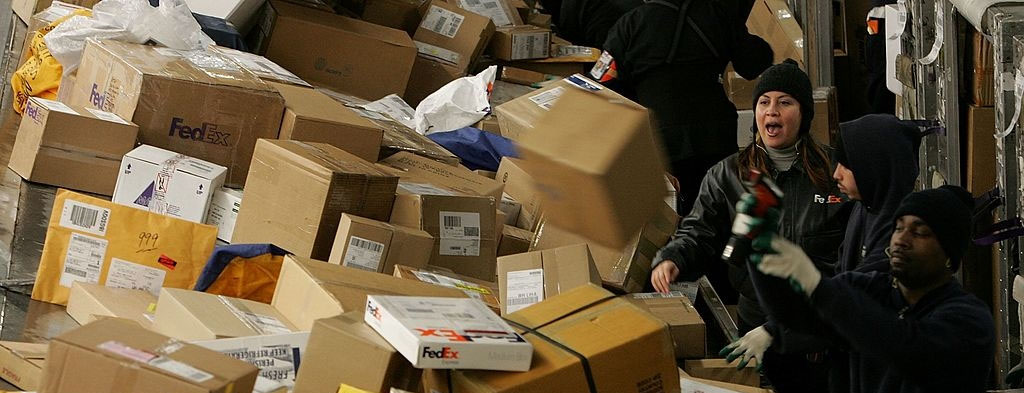
Shipping Time Sensitive Orders During the Holiday Season
The Holiday Season has officially started and crunch time is upon us. We are receiving a very high volume of orders each day and have also begun to see a slow down in some of the shipping services. For the time being we are going to keep USPS Priority as a shipping option but we HIGHLY recommend that anyone with a time sensitive order to select UPS Ground or better.
If we get to a point where USPS Priority becomes completely unreliable (as it has in years past during the Holiday Season) we will remove it as a shipping option all together.
Below are the shipping maps from both USPS Priority and UPS Ground. Use these to plan your shipping choices - also keep in mind that over weekends and the beginning of each week, it may take us an extra 1 to 2 business days to process and ship all orders as we work through the queue.
UPS GROUND TRANSIT MAP - 12/1/2016

USPS Priority Transit MAP - 12/1/2016
Note: Add 2-3 business days to these estimates
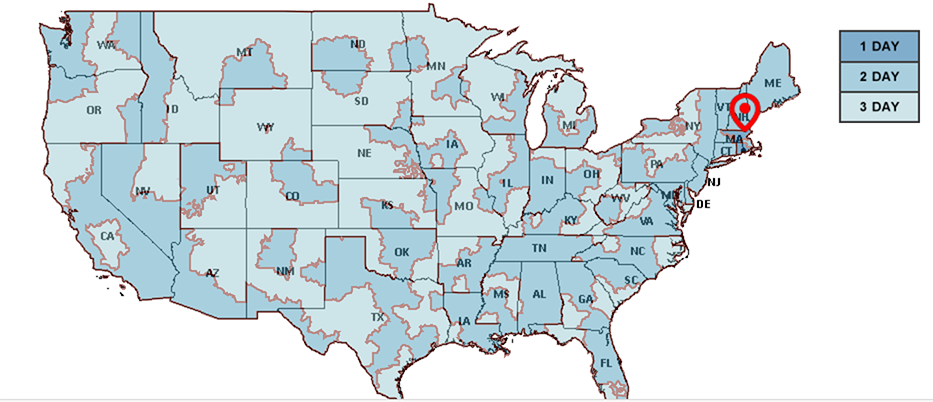
Kid's Alpaca Mittens now available!
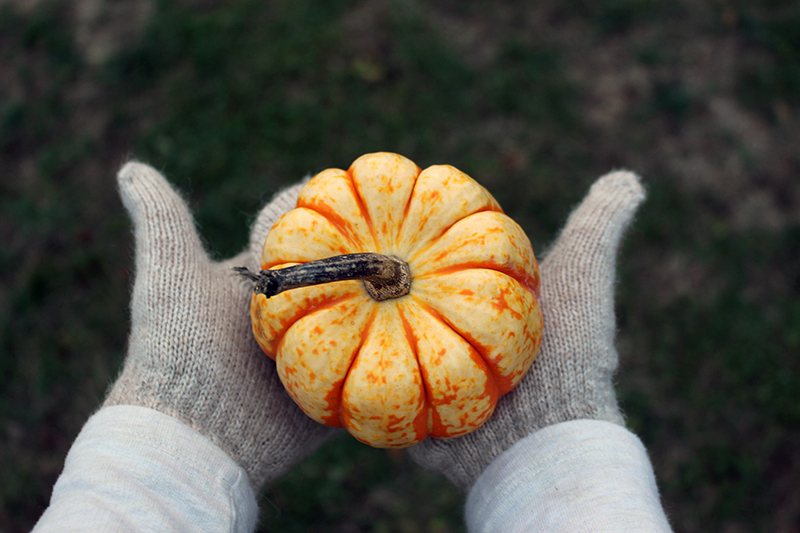
Our new Kid's Alpaca Mittens are a great option for someone looking to share the gift of alpaca with a young one! Made from our Suri Blend Alpaca Yarn, these Kid's Mitts are as soft as they are warm, all without the excess bulk. This is a limited run to test demand for Kid's sized alpaca products. Made in our Suri Light Fawn and Suri Rose Grey colors.
Available in Infant, Toddler, and Children's Small.
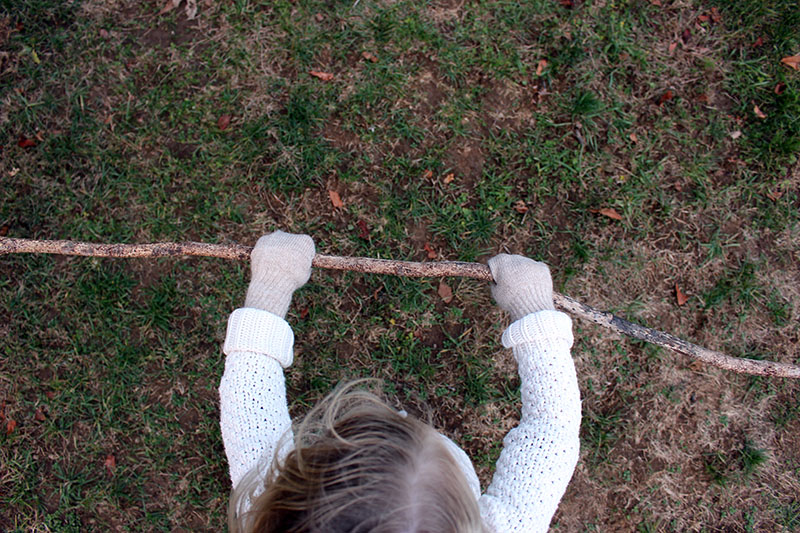
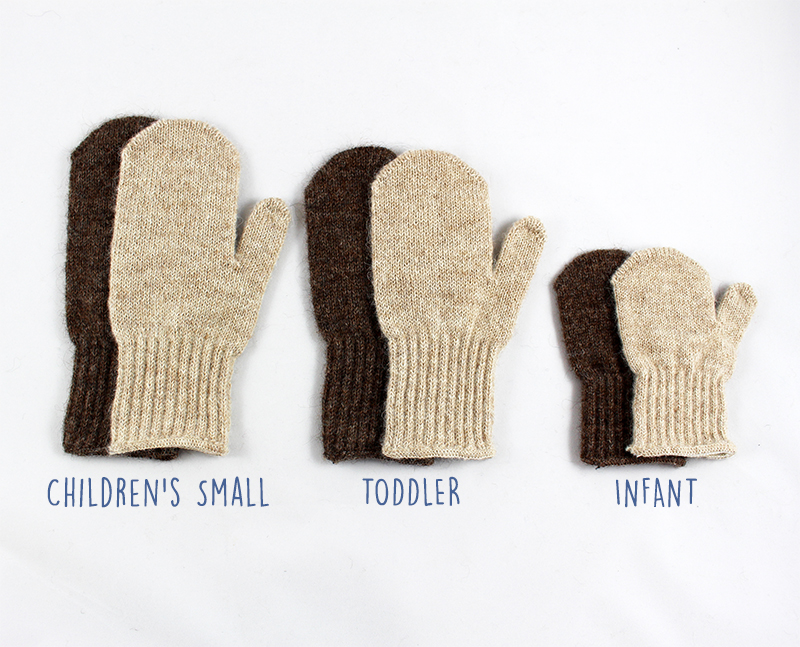
Thanksgiving Shipping Schedule
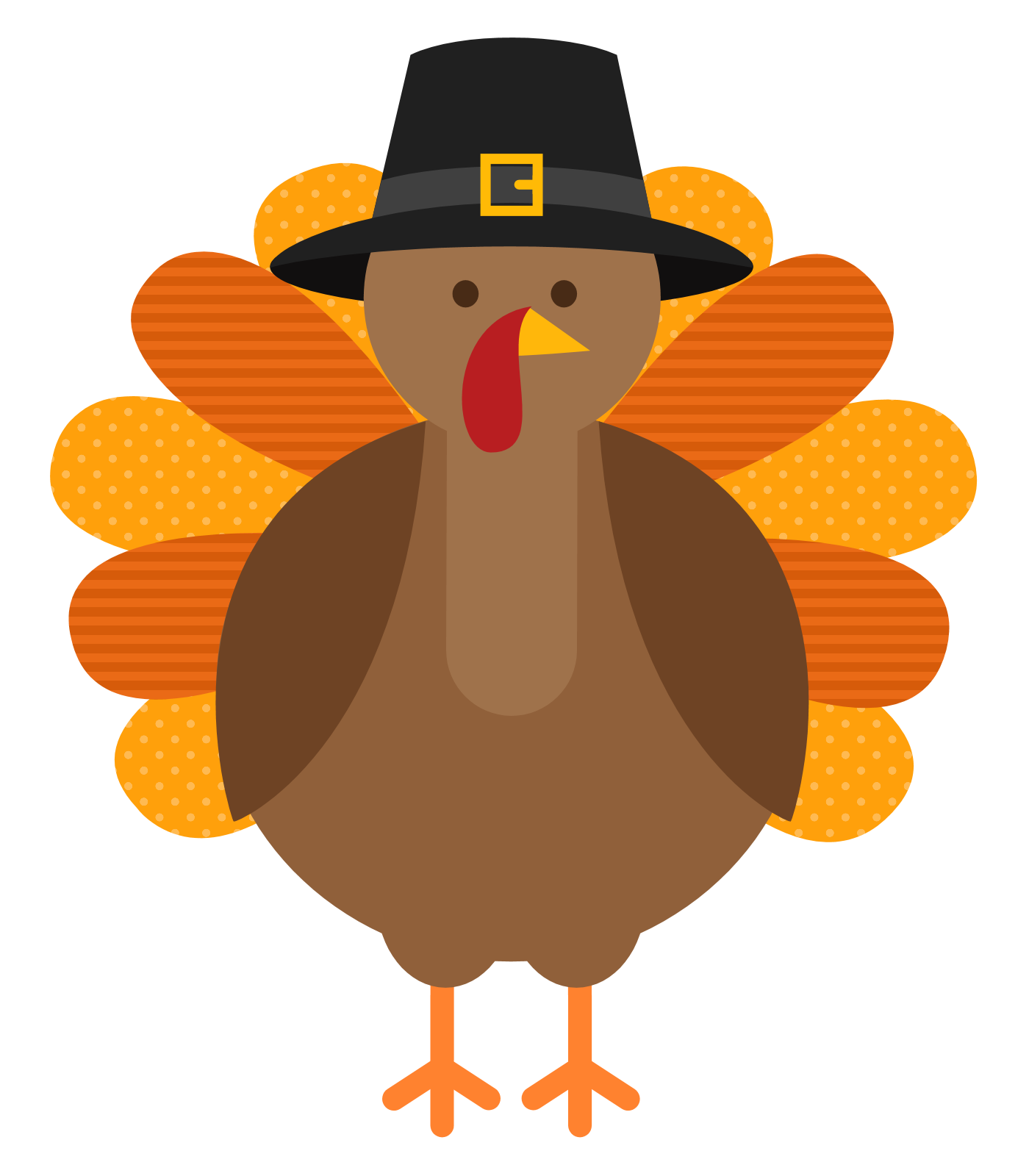
NEAFP will be closed this Thursday and Friday (Nov. 24th and 25th) for Thanksgiving. We will begin processing and shipping orders in the order they were received starting on Monday Nov. 28th. Thank you and we hope you all have a safe holiday!
Back In Stock: Driving Gloves, DYED Scarves and Hats, Cable Wrist Warmers

We have a few back in stock updates!
Back in Stock and ready to ship:
Driving Gloves - Large - Dark Grey (limited supply)
Driving Gloves - Medium - Brown
Boucle Mittens - Small - Grey - Limited Supply (Slightly different sizing due to being from first prototype batch with new manufacturer - see note in Color Inventory Page)
Wrist Warmers - Cable - Fawn
DYED Cable and Lace Scarves: Wildberry, Forest Green
DYED Cable Knit Beanie: Wildberry
DYED Watch Cap: Wildberry
Article: The Slow Alpaca
The Slow Alpaca
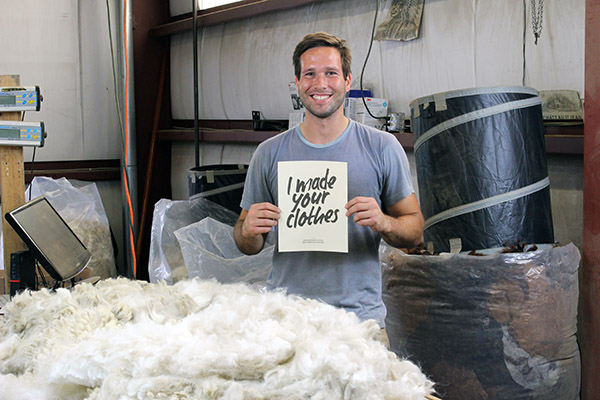
by Sean Riley
Originally published in the 2016 Showtacular Showbook
Over the last 30 years there’s been a noticeable shift in consumer mentality around the globe, particularly in regards to our modern day food systems. Through the democratization of knowledge, populations across the planet have gained access to more information and have become better informed about the food and products they consume daily. In 1986, when a McDonald's franchise was being constructed in Rome, Italy, an Italian Journalist Carlo Petrini became outraged and the Slow Food movement was officially born.
Petrini saw the uprising of the industrial, multinational corporatization of the global food system a direct threat to Italy's rich culinary history and ultimately the rest of the world's national and regional food systems.
“We are enslaved by speed and have all succumbed to the same insidious virus: Fast Life, which disrupts our habits, pervades the privacy of our homes and forces us to eat Fast Foods... A Firm defense of quiet material pleasure is the only way to oppose the universal folly of Fast Life... May suitable doses of guaranteed sensual pleasure and slow, long-lasting enjoyment preserve us from the contagion of the multitude who mistake frenzy for efficiency. Our defense should begin at the table with Slow Food. Let us rediscover the flavors and savors of regional cooking and banishing the degrading effects of Fast Food.” (Excerpt from the Official Slow Food Manifesto, as published in “Slow Food: A Case for Taste” in 2001).
The Slow Food movement at its core strives to counterbalance the growth of global, industrial, centralized food systems that destabilize regional economies while prioritizing profit margins over all else. With profit and growth the underlying motivation behind all decisions, it becomes inevitable that the quality and nutritional value of the food and food products produced will deplete over time while off balance sheet resources are exploited. What we end up with is a food system that’s disconnected with its natural origins and no longer serves the people it’s feeding or the land it’s grown on. Fast, industrialized food in it’s current form, is simply not sustainable. Out of necessity, comes invention, and the Slow Food movement was born.
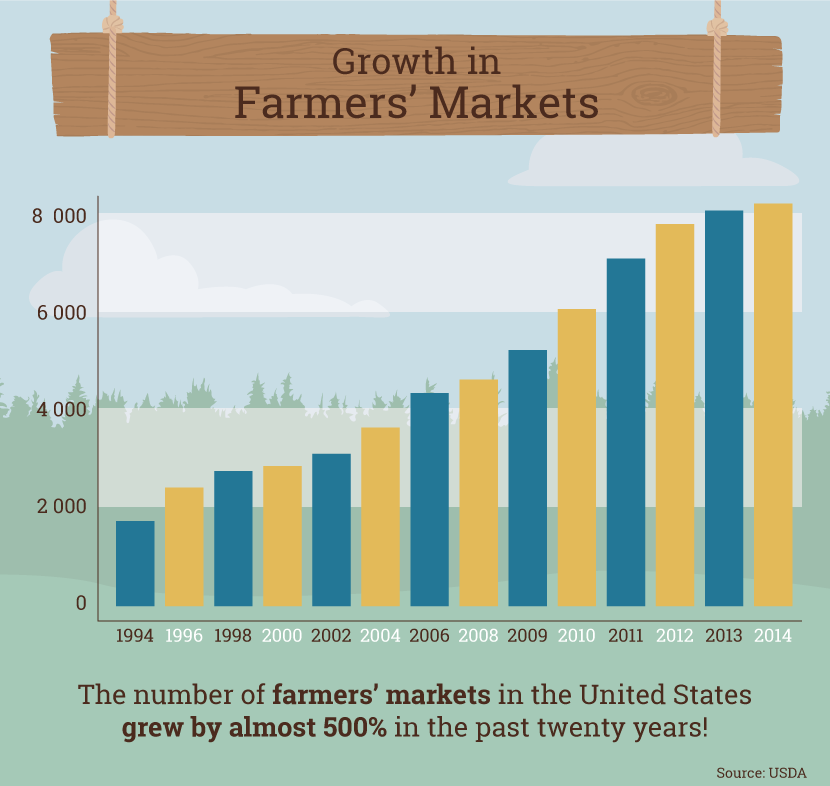
One major sign of the Slow Food Movement that we’ve all experienced in the last decade is the rise of Farmer’s Markets. Over the last 20 years Farmers Markets have grown by almost 500% in the U.S. These markets have sprung up as community places where local and regional farms can bring their products direct to consumer. According to the American Farm Bureau Federation, a farm selling produce through a typical grocery chain store distribution model will only make upwards of 19% profit on the food they produce. By taking their produce direct to the retail market, the farm is able to see a much higher profit margin, allowing them to be more sustainable on smaller scale operations. Across the country, many alpaca farms take part in this grassroots community movement by sharing their alpacas, the fiber, and the products it produces with their local communities. The slow and steady rise of the Slow Food Movement and the localized community food markets that have sprung up to support it are the result of people asking new questions about the food they consume:
What is the food that I eat made from?
Where and Who grows it?
How is it grown and made?
Is it grown in a healthy and sustainable manner?
Who benefits from its sale and consumption?
With the growth of the Slow Food movement across the globe over the last 30 years, it’s apparently clear the impact the general consumers shift in purchasing has had on the larger food industry. Local, Regional based food economies have grown exponentially, along with the rise of organic, non-GMO, and farm to table business and marketing initiatives. It is safe to say that the Slow Food movement has officially become an industry in its own right, as well as begun influencing industries outside of food itself.
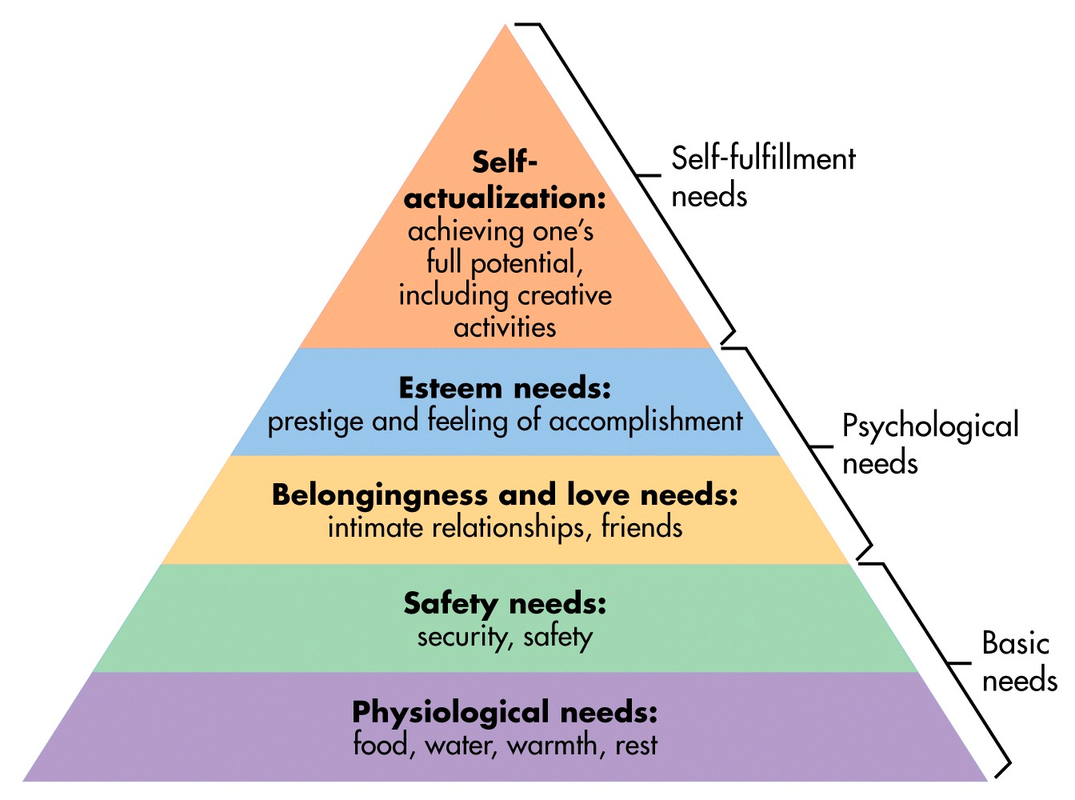
Food, being one of the, if not the most essential need for human survival, was the first of many global industries to be disrupted through this shift in consumer perspective. Another pillar on the base of Maslow’s Hierarchy of Needs Pyramid is Clothing; the next logical step for this growing frontier.
The Slow Fashion term was officially coined by Kate Fletcher in 2007, at the Centre of Sustainable Fashion in the UK. Slow Fashion is not a seasonal trend that comes and goes like animal print, but a sustainable fashion movement that defines itself as: a term which describes clothing which lasts a long time and is often made from locally-sourced or fair-trade material, ultimately contributing to a more sustainable society and economy. The Slow Fashion movement, like the Slow Food Movement, is a direct response to the off the accounting book costs to the Fast Fashion world we find ourselves in today where clothes are made to be worn once, fall apart after a few wears, and be thrown away and replaced soon after. It's time we started to embrace the Sustainable Fashion Movement.
With the rise of Fast Fashion over the last 20 years, where trends are measured in days instead of seasons and the life span of a garment is measured in months instead of years, the Fashion industry has proven to be ripe for disruption via the Slow ideals movement. Like the Slow Food movement that grew organically as a direct response to Fast Food threatening a rich culinary history, Slow Fashion is positioning itself as a counterbalance to the recent wear once retail trends of the late 90s and 2000s. Much like Fast Food, Fast Fashion lacks connectedness, soul, & integrity. Cheap, mass produced garments are generic and expendable and don’t hold any true value besides making the purchaser feel trendy for that small window of time the garment is indeed considered “fashionable.”
In order to drive sales, Fast Fashion brands offer their garments at the lowest possible cost to consumers and maintain profitability by producing goods as cheaply as possible. To reduce the cost of the products they produce and maintain profitability, they’ve turned to moving the true cost of these products off their accounting balance sheets. These true, “unaccountable” costs of the Fast Fashion industry are the exploited labor force in developing nations, the rampart pollution in countries with lax environmental protection laws, the wasteful use of energy to move material and goods across the globe, and the loss of self sustainability of national and regional economies. Besides the true costs of Fast Fashion piling up on the manufacturers end, we are also starting to see the indirect result on the consumer side.
According to the Bureau of Labor Statistics and the EPA Office of Solid Waste, the average American Family spends over $1700 on clothes a year while each member of the household throws away 65 lbs of clothing during that same period. In 1930, the average American Woman owned 9 complete outfits, today it’s 30(Forbes). Although the average American’s wardrobe and need for closet space is expanding, the majority of us still wear only 20% of our clothing 80% of the time.
The alternative to all of this is the slowly growing alternative of ethically sourced and produced Slow Fashion. The garments are made from low impact, renewable resources and designed to be durable and last. Produced in an ethical environment, free of exploitative labor, hidden pollution and environmental costs through global transport and finishing/dyeing techniques, and the reduction of hazardous chemicals in the manufacturing process. The movement calls for accountability through the entire production life cycle of a product, from the time it’s raw material, all the way through it’s manufacturer, purchase, & use.
Much like the Slow Food movement, as more people become aware of the true, off balance sheet costs of the clothing they purchase and wear everyday, people are looking to educate themselves and seek out alternatives and the Slow Fashion movement is a direct result in this shift in consumer behavior.
In order to truly understand the impact of any particular product, we have to analyze its Life Cycle. We can follow it from Raw Material, Processing, Assembly, and Distribution to the end user to better understand its true impact and story.
Although the U.S. accounts for 28% of the world's clothing purchases, only about 2% of those garments are made in U.S. based textile mills. When analyzing a typical Fast Fashion cotton t-shirts product life cycle, from raw material in the field to finished product ready to wear, we can start to appreciate the true environmental and social costs behind the limited time $4.99 price tag. The typical cotton t shirt starts off as cotton in the field, consuming tremendous amounts of water, petroleum based pesticides, herbicides, and fertilizers to grow and flourish. Once harvested, it begins consuming vast amounts of energy to be transported across the globe and turned into yarn and fabric. The cotton fabric will be dyed using hazardous chemicals that if not handled properly will pollute the local environment. From there it will travel across the globe again, to be cut, sewn, and finished, in most cases by exploited labor in developing nations with little to no labor protections in place. Now that it’s a finished t-shirt, it will travel even further to eventually reach a retail rack near you; to be purchased, worn, lost in the back of the closet, and eventually forgotten.
As we learn about the true costs behind fast fashion, it’s natural that alternatives begin to pop up on the other end of the spectrum. The U.S. Alpaca Fiber Industry is a great example of one such counter balance point. When following the flow of a U.S. Alpaca Products life cycle, we can see the stark differences.
The Alpaca fiber starts off in the field, being grown on an animal that is an efficient eater, consumer of water, requires little intervention, and with it’s padded feet physically treads lightly on the land. Once humanely harvested, the fiber is collected before being sent off to domestic textile mills & turned into yarn and fabric. The U.S. based textile mills are in many cases century old businesses, with strong labor and environmental protections put in place to ensure the quality of their work environments and to safeguard their local communities from unwanted pollution. From here the finished yarn and fabric goes off to to be knit, woven, cut, sewn, and finished by a U.S. skilled craftsman earning a living wage. In the case of the current U.S. Alpaca Fiber Industry, a vast majority of those finished products end up back on the farm to be brought directly to local market. When the same alpaca farmer who raised the animal, and harvested the fiber is also sharing those finished goods with their local communities, they receive the highest profit margin on the fiber.
This is a simple analysis of the production life cycle when comparing the status quo fast fashion cotton t-shirt, to the ever Slow U.S. Alpaca good, but it’s very clear to see the stark contrast. Due to the size of the U.S. Alpaca industry and being a high cost producer of fiber, U.S. alpaca farms will not be able to compete on the global commodity market. Although we can’t compete on price and volume of raw alpaca fiber in international markets, we are positioned to take our goods directly to one of the largest textile market places in the world which happens to be located right in our backyards. We don’t need to compete with the existing Fast Fashion paradigm, but rather define our own game where we already have a strategic advantage.
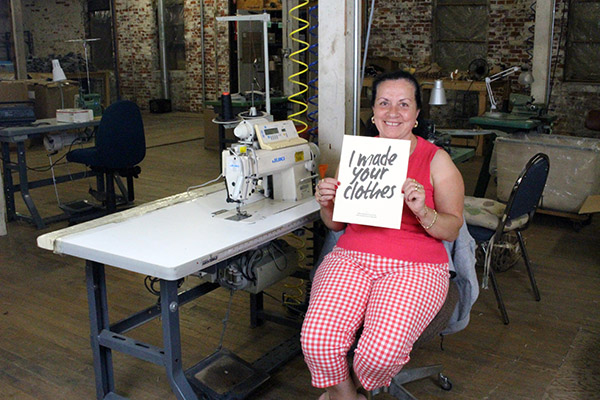
Ana getting ready to sew at NEAFP.
As farmers, fiber growers, and in many cases the retail distributor, it’s important that we acknowledge this growing shift towards Slow Fashion, it’s ideals, and how we can position ourselves as individual businesses and an industry to cater to it. The Fast Fashion system we have in place today is simply not sustainable and it's true underlying costs are beginning to pile up around the planet and can no longer be ignored. As more people wake up to the truth behind the garments they purchase everyday, the demand for more sustainable and transparent options will rise.
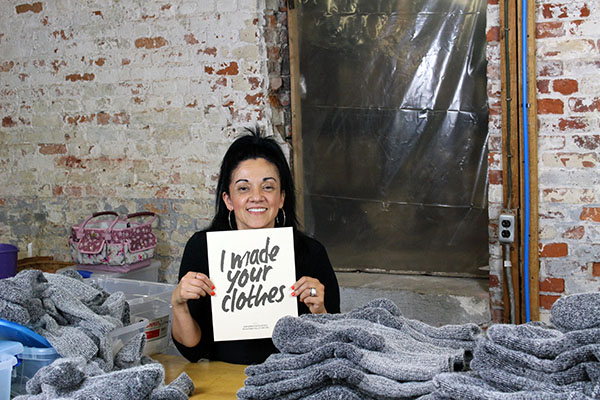
Carol inspecting Survival Socks before labeling at NEAFP.
It boils down to sharing our story, about the alpacas, their fiber, and the finished goods they produce. Along with the normal selling attributes like warmth, strength, and comfort factor, we need to also be sharing it’s back story. The majority of U.S. Alpaca products that are being produced in the U.S. have a positive, low impact supply chain behind them that directly benefits many local and regional economies around the country. We need to study Slow Food and the problems that it is solving, and contemplate the questions that people are beginning to ask about their clothes.
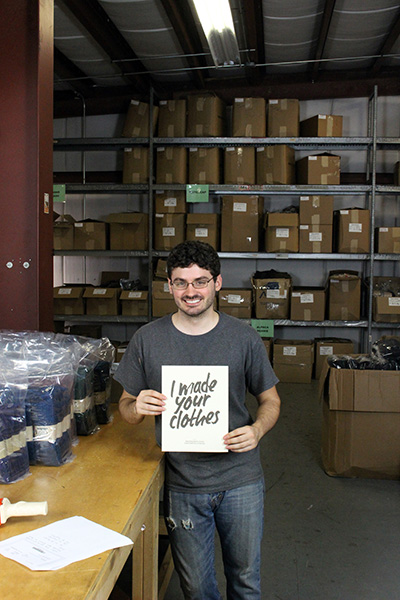
Matt preparing orders for shipment at NEAFP.
We already have the answers that our future customers are asking:
What is it made from? Where & How is it made? Who benefits from its sale?
Each purchase of a product Made in the U.S. from U.S. Grown Alpaca Fiber, supports the farm or small business that brought it to market, the farm & alpacas that produced the fiber, and the many textile mills that helped manufacturer it. As people become conscious of where, how, and of what their clothing & accessories are made from, the U.S. Alpaca fiber industry will be there to service and grow with this expanding market.
With the democratization of knowledge, through the growth of the internet age, it’s never been easier to connect to our peers and share our story. We have the tools to send information across the planet and back in a split second, it’s time we crafted our message and positioned ourselves and our alpacas as the poster children of the rising Slow Fashion movement. While showcasing our animals, the great attributes of their fiber and clothing made from it, we need to humanize the people and the mills behind their production. At every step along the way, from raw fiber in the field to finished goods at the farmer’s market, U.S. Alpaca products feel warm and fuzzy at each step of the way, it’s time we showcase and share that love with everyone.
Written by Sean Riley of the New England Alpaca Fiber Pool Inc. - August 2016
Version 1.0 of our Farm Store Locator is now live
Our Farm Store Locator is now live!
Check it out here: http://bit.ly/alpacafarmstores
Want to get listed? Submit your Farm Store Here


